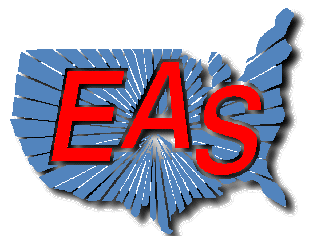Some Cablers Can’t Run Nov. 9 EAS Test Crawl, Lobby Sought Postponement

WASHINGTON: Some cable TV viewers may not get the message that the Nov. 9 national test of the Emergency Alert System is just that--a test. Michael Powell, chief of the National Cable and Telecommunications Association has asked test administrators to postpone it until they can figure out a fix.
“We are concerned that a great number of cable households will not be see an onscreen message that ‘this is only a test,’” Powell wrote in an Oct. 21 letter to Craig Fugate of the Federal Emergency Management Agency. “This raises the possibility that some viewers, particularly the deaf and hard-of-hearing, could mistakenly believe that the test is an actual national emergency.”
It won’t help matters that there hasn’t been such a test in this history of the system, he notes.
“During the test on Nov. 9, cable customers’ devices will be force-tuned to a channel on which the audio feed will advise them that it is only a test, but--as a result of the way the EAN event code was designed--the onscreen message will not. Instead, the onscreen text will simply state: ‘This is an Emergency Action Notification,’ and in some cases, ‘for the United States’ or ‘for the District of Columbia,’ depending on the equipment,” Powell wrote.
Broadcasters are likely to have the necessary production equipment to run a “test” crawl during the three-minute event. Satellite operators can do text overlays from centralized distribution facilities. Far-flung cable headends generally lack such equipment, however, and EAS messages are passed through automatically.
Powell said the industry is trying to come up with a fix, and that Trilithic and Monroe have recently developed software patches allowing cable operators to do a text overlay. Field tests have started, but hundreds of headends will have to be patched--including those without Trilithic or Monroe gear, Powell said.
“At this juncture, it appears that a significant number of cable systems will not be able to deploy the patches given the amount of variety of equipment in the field,” he said. “As a result, for many operators, there simply is not enough time remaining to responsibly test and deploy the new software.”
Powell goes on to mention how the implementation of the Common Alerting Protocol would allow cable operators to display text information, but the CAP deployment deadline has been extended to June of next year.
“The most prudent course would be to postpone the national test until better functionality exists in the EAS system to visually indicate tat this is a test,” Powell wrote. “We understand the effort that has gone into the test and the desire for national test data. But given that the national alerts have not been tested for decades, we believe that the benefits of conducting a test on Nov. 9 are outweighed by the risk that some consumers--particularly in the deaf and hard-of-hearing community--will mistakenly believe that the emergency is real.”
An NCTA spokesman said the industry does not expect a delay in the test and has been “working diligently for the past few months to implement a consumer awareness campaign to alert viewers that they should not be alarmed when the test occurs.”
~ Deborah D. McAdams
Get the TV Tech Newsletter
The professional video industry's #1 source for news, trends and product and tech information. Sign up below.
